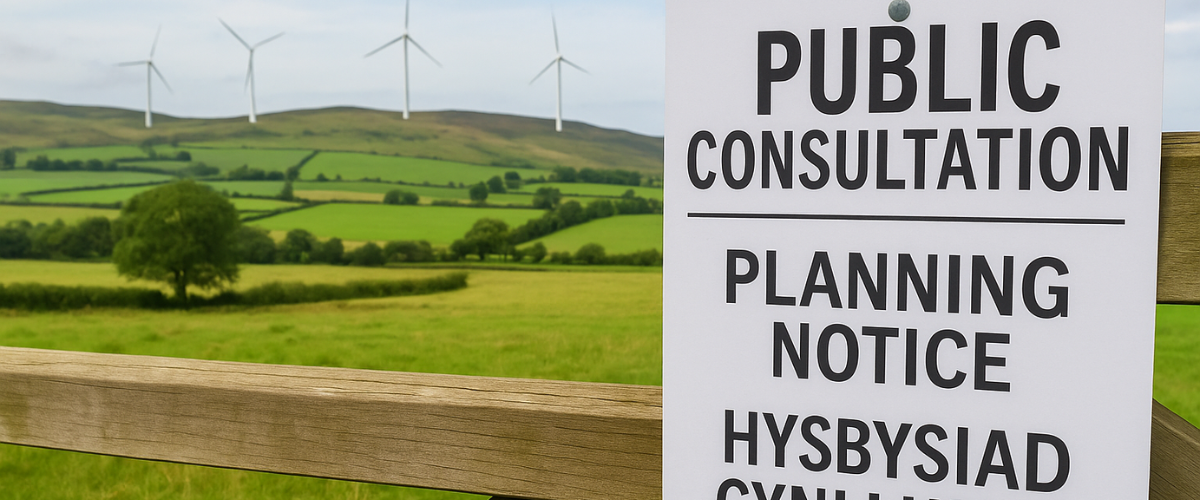Ninety percent of readers can skip this article, but I was surprised to hear from two friends, both intelligent and interested in the countryside, that they had no idea what the initials stand for. So here’s a brief introduction.
They are Developments of National Significance, but there’s another acronym we need to know as well……
A department of the Welsh Government called PEDW (Planning and Environment Decisions Wales) handles DNSs, and decisions are made by the Welsh Government, and not by local County Councils. They are considered to be developments of national, not just local, significance, like windfarms, solar panel arrays, reservoirs, big road projects. and so on. It is worth saying straight away that full disclosure of the intended project at a very early stage is encouraged, including notifying the local public about schemes in their locality. There will be notices pinned up with details of evening meetings in village halls.
Gradually more and more information is added to the file, dealing in great detail with every possible matter of interest, and usually written by a professional specialist. For example, there will be a long paper on the effect of wind turbines on the views out of the proposed NE Wales National Park; and details of provisions for the resiting of wildlife, including mammals, bats, birds (including curlew). All these papers are available online, and I will tell you in a moment how to access them.
Finally, an Inspector is appointed by PEDW, and the case is heard. The Inspector may decide what sort of hearing should take place – either a public hearing with speakers for and against, or an exchange of documents.
The Inspector makes his/her recommendation in writing to the appropriate Government Minister, currently Huw Irranca-Davies, which may be to approve or dismiss the application, and the Minister can agree or not agree, and adjudicate accordingly. His advice, and the subsequent decision will of course conform with government policy of the day. If, for example, it is policy to achieve net zero by 2050, then it is probable that renewable energy applications will be approved. The growing highly professional pressure groups opposing wind applications throughout the country may of course change WG policy!
Here’s how to Find Details of Developments of National Significance.
Google DNS Wales
Click on Developments of National Significance (DNS) Applications
Scroll down and click on Planning Casework Portal
Scroll down and click on View All Applications
Click on the Authority column to bring Local Authorities into alphabetical order.
Choose which one you want to look at.
As mentioned above, you absolutely must then scroll down to DOCUMENTS to see the incredibly detailed work that goes into the application and the way it has so far been criticised by PEDW.
Another Way to Find DNSs.
If you know the name of the project, or the name of the developer, you can usually get details from a Google search. For example, google “Alwen windfarm” and you connect to the developer, the massive RWE website. Or google “Moel Chwa” and you get straight through to Bute Energy and can read about their intentions for Welsh hills.
Finally
CPRW’s policy is to oppose onshore wind energy, but to tolerate most offshore proposals. When you have looked at a DNS renewable energy application, near where you live perhaps, you might like to consider whether, when push comes to shove, the price to be paid by our precious hills and by our fragile dying wildlife is worth the possible (but only possible) reductions in Wales’s CO2 emissions ?
Mike Skuse
CPRW Clwyd Branch Committee
[instagram-feed feed=1]


